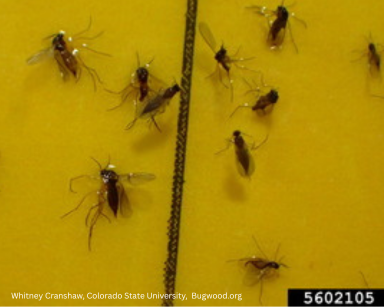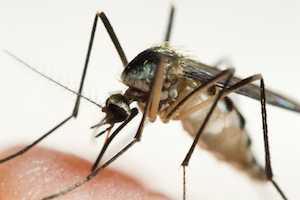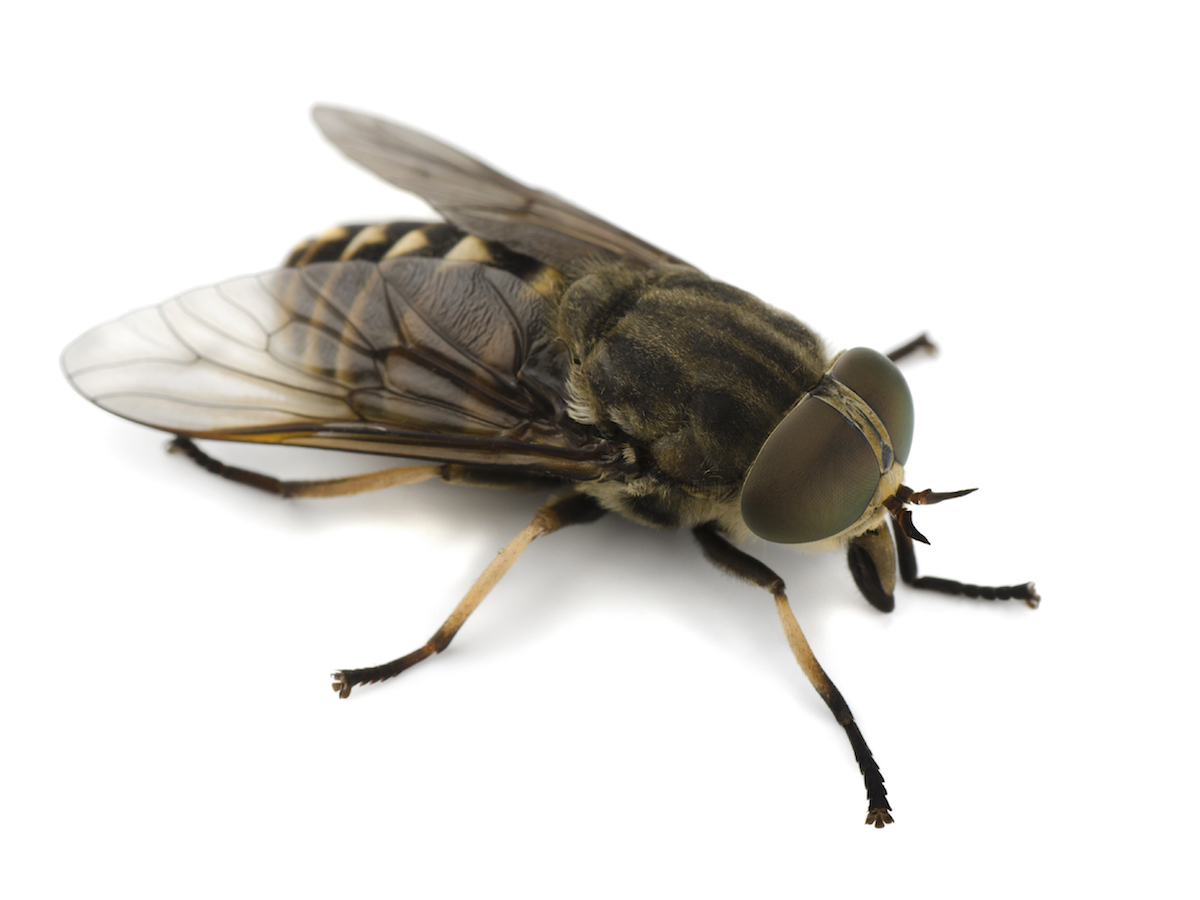Gnats

Antennae: No
What Are Gnats?
Gnats are tiny, winged insects that belong to the same insect order as mosquitoes, flies, and maggots. They are found throughout the United States and other continents and are a nuisance. While “gnats” are not an official group or species, this term is commonly used to describe a subgroup of small-sized flies that are often seen in large groups. There are many species of flies that might be referred to as gnats in North America.
There are two types of gnats - fungus gnats and biting gnats.
Fungus gnats are a common indoor pest that feed on houseplants. They do not bite humans.
Biting gnats, sometimes called biting midges, no-see-ums, or sand fleas, have blade-like mouthparts that cut the skin when they bite. While their bites aren’t harmful, they can cause itching and welts at the site.
Both fungus and biting gnats often fly around the heads of people and animals.
These flies are very small, typically measuring 1/16 to 1/8 of an inch long. Gnats have slender black bodies, translucent wings with veining, six legs and moderate-length antennae.
While gnats can be found anywhere throughout the United States, they’re most often found in areas with significant plants and moisture, including parts of California and Florida.
Biting gnats are attracted to the carbon dioxide people emit. Non-biting gnats are attracted to moist soil commonly found in over-watered houseplants. Although they typically come out in the summer, most gnats can be a nuisance year-round, especially in warmer climates.
The entire lifespan of a gnat can take 3-4 weeks, and once they reach the adult stage, they generally only live about 7-10 days.
Fungus gnats don’t bite humans, but their presence can be a major nuisance especially when they infest in high numbers indoors. These gnats are more of a threat to plants than they are humans as their larvae can deplete young or weak plants’ necessary nutrients, root hairs, and tunnel into the root itself where they can spread pythium, a plant pathogen that can rot and kill seedlings’ roots.
Biting gnats can transmit diseases to both humans and livestock, although none have been found to spread disease to humans in the United States. In the US, their main public health threat is their painful bite that can result in itchy, painful marks and you may see some swelling around the site.
Both types of gnats can be quite a nuisance if you have an infestation so it’s important to take the proper steps to prevent them.
Gnats aren’t sneaky, so you’ll certainly know if you have them. More specifically, if you have a fungus gnat infestation, you’ll see them on or near plants or outdoor lights. The signs of a biting gnat infestation, on the other hand, are small bites on exposed areas of the body. Biting gnats are most often found outdoors.
Letting your plants dry out, fixing leaks, and eliminating standing water are all ways to keep gnats away from your property. Like most pests, sealing holes and crevices, and screening doors and windows are other ways to keep gnats out.
Using insect repellents containing at least 20% DEET or another EPA-registered ingredient can help keep gnats away when spending time outdoors. Learn how to properly apply insect repellent.
If you're dealing with a gnat infestation or any other persistent pest problem, it's best to contact a licensed pest control professional. They can accurately identify the pest and treatment options tailored to your situation.




